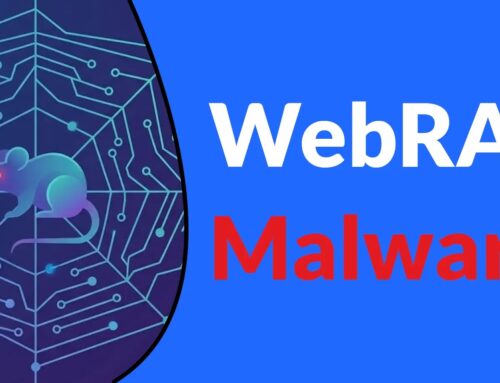
Elastic Security Incident – Hackers Accessed Email Account Contains Valid Credentials
The digital perimeter of even the most robust organizations is only as strong as its weakest link. In a recent disclosure, Elastic, a prominent name in data analytics and security, provided a stark reminder of this axiom. A security incident, originating from a third-party breach at Salesloft Drift, led to unauthorized access to one of Elastic’s internal email accounts. This seemingly isolated event, though not directly impacting their core Salesforce environment, exposed a critical vulnerability: the presence of valid credentials within email communications. This incident underscores the pervasive and often underestimated risk posed by supply chain vulnerabilities and the sensitive data lurking within seemingly innocuous platforms like email.
The Anatomy of the Elastic Security Incident
Elastic’s security incident began with a breach at Salesloft Drift, a third-party vendor. While the exact vector of the initial compromise at Salesloft Drift has not been publicly detailed, its downstream effect on Elastic was immediate and concerning. An internal Elastic email account was accessed, containing credentials that, while not directly tied to Elastic’s core Salesforce environment, still represented a significant security lapse. The incident highlights a common pitfall: the storage of sensitive information, including credentials, within email correspondence. Such practices, often adopted for convenience, create an expandable attack surface for threat actors.
It’s crucial to understand that even if the exposed credentials didn’t directly compromise Elastic’s primary operational systems like Salesforce, their presence in an email account can be a stepping stone. Threat actors can leverage such credentials for lateral movement within a network, gain access to other sensitive systems, or use them in phishing campaigns. The full extent of the data exposed was limited to a “limited number of emails,” indicating a contained, yet significant, data exposure.
Third-Party Risk: The Unseen Attack Surface
This incident vividly illustrates the concept of third-party risk or supply chain attack. Organizations increasingly rely on a complex web of external vendors for various services, from CRM and marketing automation to cloud infrastructure. While these integrations offer efficiency, they also introduce external dependencies that can become entry points for cybercriminals. The Elastic breach serves as a strong reminder that an organization’s cybersecurity posture is inextricably linked to the security practices of its partners and vendors. Robust vendor risk management programs, including thorough security assessments and continuous monitoring, are no longer optional but imperative.
The Peril of Credentials in Email
The core of Elastic’s concern stemmed from valid credentials being present within the compromised email account. This practice, unfortunately common, presents a significant security vulnerability. Email is inherently not a secure medium for storing or transmitting sensitive information like passwords, API keys, or access tokens. Even seemingly innocuous exchanges can contain metadata or discussions that, when combined with other leaked information, can be pieced together by attackers. The incident reinforces the need for organizations to implement strict policies against embedding credentials or other highly sensitive data in email communications.
Remediation Actions and Best Practices
While specific remediation actions taken by Elastic were not fully disclosed, drawing from general cybersecurity best practices, organizations facing similar incidents or aiming to prevent them should consider the following:
- Credential Rotation and Invalidation: Immediately invalidate and rotate any credentials found to be exposed, regardless of their perceived sensitivity. This includes passwords, API keys, and access tokens related to the compromised account or potentially linked systems.
- Enhanced Email Security: Implement advanced email security solutions, including robust anti-phishing, anti-malware, and data loss prevention (DLP) capabilities.
- Multi-Factor Authentication (MFA): Enforce MFA across all internal and external accounts, especially for administrator or privileged access.
- Principle of Least Privilege: Ensure that the compromised email account, and all other accounts, adhere to the principle of least privilege, limiting access to only what is necessary for their function.
- Security Awareness Training: Continuously train employees on the risks associated with email, social engineering tactics, and the secure handling of sensitive information. Emphasize never storing credentials in email.
- Vendor Risk Management: Establish and diligently follow a comprehensive vendor risk management framework. This includes thorough security assessments of third-party vendors, regular audits, and clear contractual agreements on security responsibilities.
- Incident Response Plan Review: Regularly review and update incident response plans to ensure they adequately address third-party breaches and credential compromise scenarios.
Tools for Prevention and Detection
Proactive security measures and the right tools are essential for mitigating risks associated with credential exposure and third-party breaches. Below is a table outlining relevant tools:
| Tool Name | Purpose | Link |
|---|---|---|
| DLP (Data Loss Prevention) Solutions | Identifies and prevents sensitive data, including credentials, from leaving the organization via email or other channels. | Gartner Peer Insights DLP |
| Email Security Gateways (SEG) | Provides advanced threat protection, spam filtering, and policy enforcement for email communications. | Top Email Security Gateways |
| Identity and Access Management (IAM) Systems | Manages user identities and access privileges, and enforces policies like MFA and least privilege. | Related CVE Example (Note: Specific CVE for IAM systems vary, e.g., CVE-2023-28157 for a general vulnerability) |
| Vendor Risk Management (VRM) Platforms | Automates and streamlines the process of assessing, monitoring, and managing third-party risks. | G2 Vendor Risk Management |
| Security Information and Event Management (SIEM) | Collects, aggregates, and analyzes security logs from various sources to detect suspicious activities, including unauthorized access attempts. | Splunk Security |
Key Takeaways from the Elastic Incident
The Elastic security incident serves as a critical case study for cybersecurity professionals. It highlights the enduring reality that even leading technology companies are susceptible to breaches originating from third parties. The presence of valid credentials within a compromised email account underscores the importance of stringent data handling policies and the continuous assessment of all potential exposure vectors. Robust vendor risk management, comprehensive email security, and the unwavering enforcement of strong authentication mechanisms are not just best practices; they are indispensable layers of defense in today’s interconnected digital landscape.





